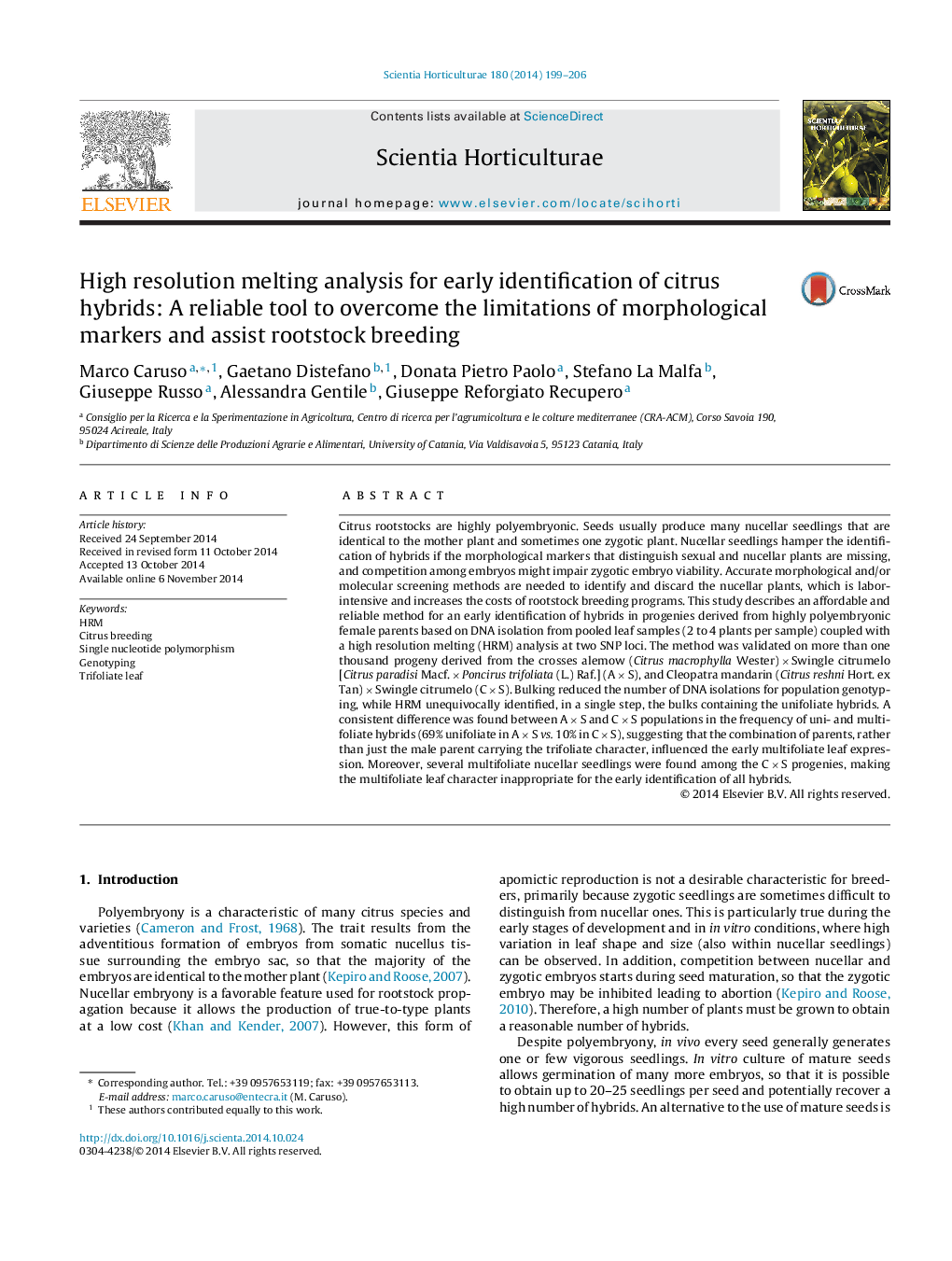| Article ID | Journal | Published Year | Pages | File Type |
|---|---|---|---|---|
| 4566545 | Scientia Horticulturae | 2014 | 8 Pages |
•A fast and reliable method for the early identification of citrus rootstock hybrids based on HRM and leaf pooling was described.•The method was validated on more than a thousand progeny derived from the crosses alemow × Swingle citrumelo and Cleopatra mandarin × Swingle citrumelo.•The frequency of multifoliate hybrids changed in the two populations, indicating that the early multifoliate leaf expression is influenced by the maternal parents.•This method may assist any type of breeding program involving polyembryonic female parents.
Citrus rootstocks are highly polyembryonic. Seeds usually produce many nucellar seedlings that are identical to the mother plant and sometimes one zygotic plant. Nucellar seedlings hamper the identification of hybrids if the morphological markers that distinguish sexual and nucellar plants are missing, and competition among embryos might impair zygotic embryo viability. Accurate morphological and/or molecular screening methods are needed to identify and discard the nucellar plants, which is labor-intensive and increases the costs of rootstock breeding programs. This study describes an affordable and reliable method for an early identification of hybrids in progenies derived from highly polyembryonic female parents based on DNA isolation from pooled leaf samples (2 to 4 plants per sample) coupled with a high resolution melting (HRM) analysis at two SNP loci. The method was validated on more than one thousand progeny derived from the crosses alemow (Citrus macrophylla Wester) × Swingle citrumelo [Citrus paradisi Macf. × Poncirus trifoliata (L.) Raf.] (A × S), and Cleopatra mandarin (Citrus reshni Hort. ex Tan) × Swingle citrumelo (C × S). Bulking reduced the number of DNA isolations for population genotyping, while HRM unequivocally identified, in a single step, the bulks containing the unifoliate hybrids. A consistent difference was found between A × S and C × S populations in the frequency of uni- and multifoliate hybrids (69% unifoliate in A × S vs. 10% in C × S), suggesting that the combination of parents, rather than just the male parent carrying the trifoliate character, influenced the early multifoliate leaf expression. Moreover, several multifoliate nucellar seedlings were found among the C × S progenies, making the multifoliate leaf character inappropriate for the early identification of all hybrids.
